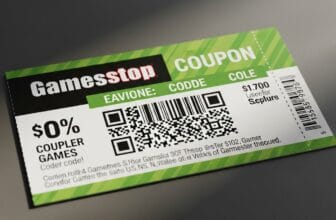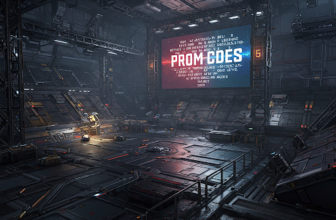
Bounce house for sale: The ultimate guide to inflatable fun
Bounce houses, those vibrant, inflatable castles of joy, have become a staple at birthday parties, backyard barbecues, and community events. But what if you could bring that bouncing bliss home permanently?Investing in a bounce house for sale offers endless entertainment for kids (and let’s be honest, some adults too!). This comprehensive guide will cover everything you need to know before taking the plunge into bounce house ownership.
Why buy a bounce house?
More than just a fun toy, a bounce house provides numerous benefits:
- Endless entertainment: A bounce house provides hours of active fun, keeping kids entertained and engaged. It’s a guaranteed hit at any gathering.
- Physical activity: Bouncing is a fantastic form of exercise, promoting cardiovascular health, coordination, and balance in children.
- Social interaction: Bounce houses encourage social interaction and cooperative play among children.
- Convenience: Owning a bounce house eliminates the hassle and expense of renting one for every event. You have instant fun at your fingertips.
- Versatility: Bounce houses aren’t just for parties. They can be used for everyday play, family gatherings, or even indoor fun during colder months (with sufficient space, of course).
- Resale value: A well-maintained bounce house can retain a good portion of its value, making it a worthwhile investment.
Types of bounce houses for sale
The world of bounce houses is surprisingly diverse. Here’s a breakdown of the common types:
- Traditional bounce houses: These are the classic square or rectangular inflatables with enclosed walls and a bouncing floor. They come in various sizes and themes.
- Combo bounce houses: These combine the bouncing fun of a traditional bounce house with additional features like slides, climbing walls, or basketball hoops. They offer more variety and excitement.

- Inflatable water slides: Perfect for hot summer days, these inflatables feature a slide that ends in a splash pool. Some even incorporate bouncing areas.
- Obstacle courses: These longer, more challenging inflatables feature tunnels, climbing walls, and other obstacles for kids to navigate. They’re great for older children and promote teamwork.
- Interactive bounce houses: These incorporate games and activities, such as inflatable balls, targets, or even electronic components, for added engagement.
- Toddler bounce houses: Smaller and designed with extra safety features, these are ideal for younger children.
Choosing the right bounce house: Factors to consider
Before you buy, consider these key factors:
- Size and space: Measure your available space (indoor or outdoor) carefully. Remember to account for extra space around the bounce house for safe entry and exit. Bounce houses range from small, personal-use sizes to large, commercial-grade units.
- Age and weight capacity: Each bounce house has a recommended age range and maximum weight capacity. Choose one that’s appropriate for the intended users. Don’t overload a bounce house; it’s a serious safety hazard.
- Material and durability: Look for bounce houses made from heavy-duty, puncture-resistant materials like commercial-grade PVC vinyl. Double or quadruple stitching at stress points is a sign of quality construction.
- Safety features: Ensure the bounce house has safety netting, secure entry and exit points, and anchor points for securing it to the ground.
- Blower: The blower is the heart of the bounce house, keeping it inflated. Make sure the blower is included and is powerful enough for the size of the bounce house. Check the wattage and voltage requirements.
- Warranty: A good warranty indicates the manufacturer’s confidence in their product. Look for warranties that cover both the bounce house and the blower.
- Theme and design: Bounce houses come in a wide array of themes, from castles and jungles to superheroes and princesses. Choose a design that appeals to your children’s interests.
- Budget: Bounce house prices vary widely depending on size, features, and quality. Set a budget before you start shopping.
- Storage: Consider how you will store the bounce house when it’s not in use. Some come with storage bags for easier transport and storage.
Setting up and maintaining your bounce house
Proper setup and maintenance are crucial for safety and longevity:
- Choose a level surface: Set up the bounce house on a flat, even surface free of sharp objects, rocks, and debris. Grass is ideal, but concrete or pavement can be used with protective padding underneath.
- Use ground stakes: Always secure the bounce house to the ground using the provided stakes or sandbags, especially on windy days.
- Inflate properly: Follow the manufacturer’s instructions for inflating the bounce house. Don’t over-inflate.
- Supervise children: Never leave children unattended in a bounce house. Adult supervision is essential.
- Enforce rules: Establish clear rules for safe bouncing, such as no shoes, no food or drinks, no flips or roughhousing, and a limited number of children at a time.
- Inspect regularly: Before each use, inspect the bounce house for any tears, holes, or damage. Check the blower and power cord for any issues.
- Clean regularly: Clean the bounce house with mild soap and water after each use. Allow it to dry completely before storing.
- Store properly: Deflate the bounce house completely and store it in a dry, cool place away from direct sunlight and extreme temperatures.
Where to buy a bounce house
Bounce houses are available from various retailers:
- Online retailers: Major online marketplaces offer a vast selection of bounce houses from different brands and sellers.
- Big-box stores: Many large retail chains carry bounce houses, especially during the summer months.
- Specialty toy stores: Some toy stores specialize in outdoor play equipment and may carry higher-end bounce houses.
- Party supply stores: Party supply stores often sell or rent bounce houses.
- Direct from manufacturers: Some manufacturers sell their bounce houses directly to consumers through their websites.
Lesser Known facts about bounce houses
- The First Inflatable Structure: The first inflatable structure was designed in 1959 by John Scurlock in Shreveport, Louisiana, who was experimenting with inflatable covers for tennis courts, and he noticed his employees enjoyed jumping on them.
- Early Names: Early inflatable structures were not initially called “bounce houses.” They were referred to as “Moon Walks,” “Space Walks,” or simply “inflatables.” The term “bounce house” came later.
- Guinness World Record: The world’s largest bounce house, certified by Guinness World Records, is often a touring attraction and can be massive, covering areas equivalent to multiple basketball courts.
- Materials Evolution: Early bounce houses were made from materials that were less durable and more prone to damage. Modern bounce houses often use heavy-duty, puncture-resistant PVC vinyl, a significant improvement in terms of safety and longevity.
- Safety Standards Development: As bounce houses grew in popularity, so did the need for safety standards. Organizations like ASTM International have developed specific standards for inflatable amusement devices to ensure safety.
- Custom Designs: Beyond the standard themes, there’s a market for highly customized bounce houses. Companies can create bespoke inflatables tailored to specific events, brands, or even replicate famous landmarks.
Final thoughts
A bounce house can bring years of joy and active play to your family. By carefully considering your needs and following these guidelines, you can choose the perfect bounce house for sale and create countless happy memories.







